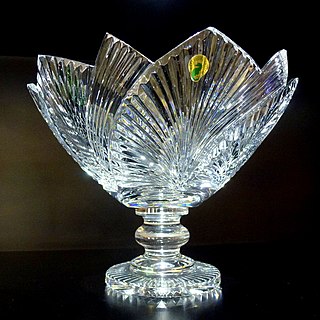
Waterford Crystal is a manufacturer of lead glass or "crystal", especially in cut glass, named after the city of Waterford, Ireland. In January 2009, the main Waterford Crystal manufacturing base on the edge of Waterford was closed due to the insolvency of Waterford Wedgwood PLC, and in June 2010, Waterford Crystal relocated almost back to the roots of glass-making in the city centre. The Mall location holds both a manufacturing facility that melts over 750 tonnes of crystal a year – although most Waterford Crystal is now produced outside Ireland – and a visitor centre with the world's largest collection of Waterford Crystal. As of 2015, the brand is owned by the Fiskars Corporation.

Oravais is a former municipality of Finland. It is located in the province of Western Finland and is part of the Ostrobothnia region. The municipality had a population of 2,189 and covered a land area of 203.98 square kilometres (78.76 sq mi). The population density was 10.73 inhabitants per square kilometre (27.8/sq mi). The municipality was consolidated with Vörå-Maxmo to form the new municipality of Vörå on 1 January 2011.
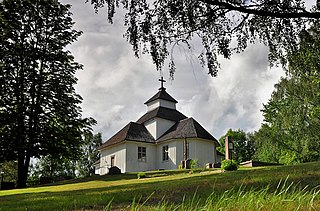
Tidaholm is a locality and the seat of Tidaholm Municipality in Västergötland Province within Västra Götaland County, Sweden, consisting of 520 square kilometers, or a little more than 200 square miles. It is located on the Tidan River, the only river in Sweden that flows north. Two islands are included within the municipality's limits: Vulcanön and Turbinhusön, the former was originally Tidaholm's industrial center and the latter historically housed the Turbine. As of 2021, there were 13,000 inhabitants.

Bollnäs is a Swedish locality and the seat of Bollnäs Municipality, in Gävleborg County, Sweden. It had 26,937 inhabitants in 2017
Fiskars Group, is a Finnish consumer goods company founded in 1649 in Fiskars, a locality now in the town of Raseborg, Finland, about 100 kilometres (62 mi) west of Helsinki. It is one of the oldest continuously operating companies in the World. Fiskars' global headquarters are located in the Keilaniemi district of Espoo, near Helsinki.

Arabia was a Finnish ceramics company, founded in 1873 by Rörstrand, now owned by Fiskars. Arabia has specialized in faience and porcelain kitchenware and tableware.
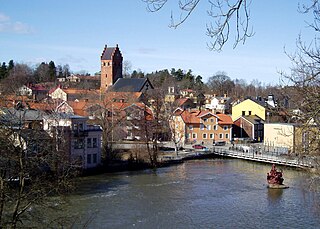
Torshälla is a locality situated in Eskilstuna Municipality, Södermanland County, Sweden with 7,612 inhabitants in 2010. It is mainly known for steel manufacturing, centered on the Nyby Bruk steel mill, and also for its historic old town centre.
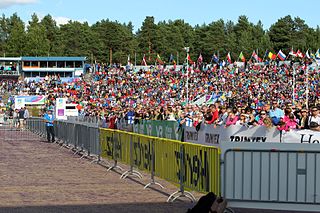
The World Orienteering Championships is an international orienteering competition which has been organized by the International Orienteering Federation (IOF) since 1966. The World Orienteering Championships is considered to be the most prestigious competition in competitive orienteering. The races are contested between members of the IOF, which are each aligned to a National Olympic Committee.
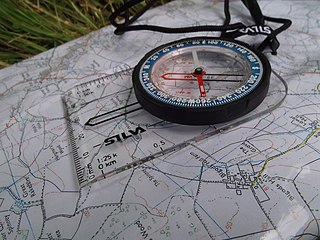
Silva Sweden AB is an outdoors products company that sells handheld compasses and other navigational equipment including GPS tools, mapping software, aircraft altimeters, and marine navigation tools. Silva's founders - Gunnar Tillander, Alvar Kjellström, Arvid Kjellström, and Björn Kjellström - invented the hugely popular orienteering baseplate or protractor compass used around the world for outdoors navigation.

Gimo is a small town situated in Östhammar Municipality, Uppsala County, Sweden with 2,765 inhabitants in 2017. The town is located about 20 km west of the Baltic Sea coast and 50 km north of Uppsala. Gimo is best known for the production plant of Sandvik Coromant with 1,500 employees (2019).

Fredriksberg is a locality situated in Ludvika Municipality, Dalarna County, Sweden with 655 inhabitants in 2010. It's the 926th largest urban area in Sweden, and the fourth largest in Ludvika Municipality.

Iittala, founded as a glassworks in 1881, is a Finnish design brand specialising in design objects, tableware and cookware.

Sandviken is a locality and the seat of Sandviken Municipality in Gävleborg County, Sweden with 26,438 inhabitants in 2023. It is situated about 25 km west of Gävle and lies approximately 190 km north of Stockholm. The rail journey to Stockholm takes about 1.5 hours and to Arlanda, Sweden's main international airport, around an hour.
Ovako AB is a European manufacturer of engineering steel for customers e.g. in the bearing, transportation and manufacturing industries. Since 2018, Ovako has been owned by Nippon Steel Corporation.

Suck-Woo Park, also known as Suku Park, is a South Korean contemporary ceramic artist and a council member of the International Academy of Ceramics (IAC).

Albert Ludvig Lindsay von Julin was a Finnish engineer, businessman and vuorineuvos.
The 1st World Orienteering Championships were held in the village of Fiskars, Finland, 1–2 October 1966.
Elin Såger (1614–1669) was a Finnish businessperson.
Ghana Freedom was a Ghanaian art exhibition at the 2019 Venice Biennale, an international contemporary art biennial in which countries represent themselves through self-organizing national pavilions. The country's debut pavilion, also known as the Ghana pavilion, was highly anticipated and named a highlight of the overall Biennale by multiple journalists. The six participating artists—Felicia Abban, John Akomfrah, El Anatsui, Selasi Awusi Sosu, Ibrahim Mahama, and Lynette Yiadom-Boakye—represented a range of artist age, gender, locations, and prestige, selected by curator Nana Oforiatta Ayim. The show paired young and old artists across sculpture, filmmaking, and portraiture, and emphasized common threads across postcolonial Ghanaian culture in both its current inhabitants and the diaspora. Almost all of the art was commissioned specifically for the pavilion. Architect David Adjaye designed the pavilion with rusty red walls of imported soil to reflect the cylindrical, earthen dwellings of the Gurunsi within the Biennale's Arsenale exhibition space. The project was supported by the Ghana Ministry of Tourism and advised by former Biennale curator Okwui Enwezor. After the show's run, May–November 2019, works from the exhibition were set to display in Accra, Ghana's capital.

Johan Albert Edvard von Julin was a Finnish businessman and vuorineuvos, who served as the CEO of Fiskars Ab from 1875, rescuing the company from financial difficulties. He was the uncle of Gustaf Mannerheim, who was later known as the Marshal of Finland and the Commander-in-chief of the Finnish Defence Forces.



















